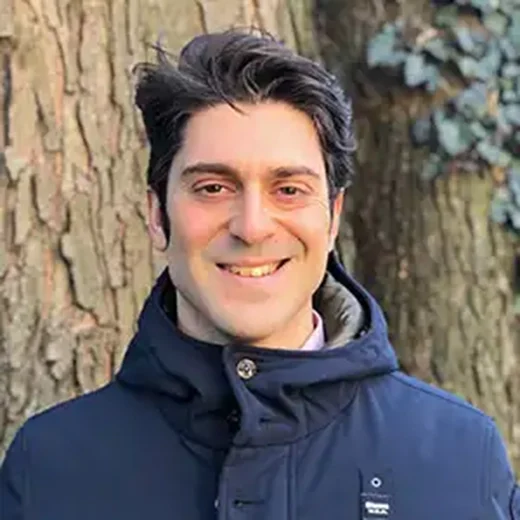Carbon Smart Landscaping
Earth, as we know, is warming at an alarming rate due to human-generated greenhouse gas emissions.
While our window for mitigation is narrowing, we have a low-risk, low-tech, natural way to reverse warming: land stewardship!
Every landscape has the potential to sequester and store the greenhouse gas carbon dioxide, turning the soil into what’s known as a “carbon sink.” By maximizing these potentials AND reducing emissions, we might stand a chance at reversing global climate change before our planet is altered forever.

We Are Experts In Carbon Smart Landscaping
How To Make Your Landscape a Carbon Sink:

Cultivate Soil Microbes
Soil microbes are the critical workforce for sequestering carbon into the soil. They attach themselves to plant roots to form a symbiotic exchange: microbes break down soil nutrients into a plant-available form and trade them for a bit of sugar water from the plant. This sugar (glucose) is actually converted carbon dioxide, pulled from the atmosphere and converted into glucose through photosynthesis. The microbes then secrete the byproduct glomalin, an incredibly stable form of carbon that also helps to bind soil particles together in the formation of humus, a key component of topsoil.
Some soil microbes are generalists (partner with many plants) and some are specialists (partner with only specific plants). The more diverse and robust the soil microbial community, the greater capacity to sequester carbon at every plant’s roots.
To cultivate soil microbes, we apply organic, natural source compost with biochar and compost tea. This organic material hosts and feeds soil microbes and is the foundation of successful ecological gardening.

Maintain Your Landscape Organically
Once you have inoculated your soil microbes, it is critical to maintain your landscape organically. As the saying goes, synthetic fertilizers feed the plant, organic fertilizers feed the soil. When synthetic fertilizers are applied, the symbiotic relationship between plant and microbe is disrupted. Instead of trading sugar for nutrients, the plant is supplied with easy, cheap nitrogen, potassium and phosphorous, and the microbes, in turn, look elsewhere for food; the sequestration of stable carbon into the soil is skipped entirely.
Research shows that traditionally managed landscapes have only a 1-2% carbon holding capacity, while on sustainably stewarded land that number can reach 3-5%. If applied at a global scale, we could reduce total carbon emissions by 30-40%.

Plant Deeply Rooted Plants
Deeply rooted plants, like native prairie grasses, are particularly adept at sequestering carbon. The microbes attached to their roots can access and breakdown deep soil nutrients that most plants cannot; the glomalin is then stored at these lower soil depths, where it is at less risk for being exposed to the air and released back into the atmosphere. Planting a diversity of plants with a range of root depths ensures that all strata of the soil are being utilized for carbon storage.

Plant Woody Trees & Shrubs
Woody plants like trees and shrubs have an additional ability to store carbon in their tissues. Since trees have much larger biomass than herbaceous plants like grasses, they can store more carbon in their tissues. Unfortunately, when forests burn, this carbon is released back into the atmosphere. However, by planting a diversity of plants – perennials, grasses, shrubs and trees, we can diversify our avenues for carbon sequestration and storage, becoming more resilient in our climate mitigation.

Reduce Landscape Maintenance Emissions
To truly create a carbon sink – one that sequesters more carbon than it emits – we need to dramatically reduce the emissions associated with landscape maintenance and construction. Fortunately, nowadays there are many options for electric leaf blowers, lawn mowers, and of course, good old-fashioned hand tools. Not only are these machines blissfully quiet, they are zero-emission and in many cases more ecologically beneficial. For example, electric leaf blowers do not blow nearly as strong, reducing the risk for soil disruption and erosion. Electric, autonomous lawn mowers mow a tiny bit every day, dropping lawn clippings and the nutrients they hold back into the soil (also reducing the need for added fertilizer). By making smart land stewardship and management decisions, we can make every landscape a carbon sink that actively sequesters greenhouse gases.
Green Jay Landscape Design employs the principals of low-impact development (LID) and Sustainable Site Initiative (SSI) during all projects, especially in ecologically-sensitive areas.
We also use state-of-the-art site protection methods during our construction and restoration practices, such as stream bank stabilization, tree protection, and erosion control devices to improve and maintain water quality.
Get started on a sustainable landscape design that will transform your property and your experience with nature. Contact us today.

Landscapes That Inspire
Beauty and sustainability go hand-in-hand. The people behind these properties enjoy a wealth of wildlife and pollinators, minimal maintenance requirements, and peace of mind in knowing their outdoor space supports biodiversity and is built to last. Take a closer look:

How We Turn Compromised Landscapes Around
Over our years of experience in the Westchester County, New York tri-state area, we've refined our process to ensure outstanding results for our clients. This is what to expect when you work with us:

Eco-Solutions for Landscape Design
We specialize in regenerative landscape design and full-service installation. As general contractors, we can work with multiple architects, engineers, and specialty contractors to complete complex projects. Take a closer look at what we can do for you:

Stormwater Management
Left to its own devices, stormwater can gather pollutants and erode your landscape. Green Jay Landscaping can design creative drainage solutions for your property.

Wetland Restoration
Wetlands are Mother Nature's filtration system! We can turn your wetland burden into an asset – meeting local wetland regulations with beautiful design.

Invasive Species Control
More than just "weeds," invasive species can out-compete other plants and reduce biodiversity on your property. Let us take care of your invasive problem holistically and responsibly.

Erosion Control
We face many challenges from steep slopes to stream bank failure. As our climate shifts, it increases the need to anticipate and design sustainable systems that will withstand flooding and serve storms.

Project Management
Jay Archer fuses ecological expertise with practical construction practices and principals for a winning combination in project development.

Carbon Smart Landscaping
We design native landscapes that sequester greenhouse gases to combat global climate change.

Check Out Our Blog

GJLD’s BEST Landscape Design & Construction Projects of 2024 | Westchester, NY, Fairfield County, CT & Essex County, NJ
Setting the Standard for Ecologically Responsible Landscaping Companies in Westchester County, NY, and the Tri-State Area
We offer regenerative design and ecological restoration in the Eco-Region 59, the Northeast Coastal Zone, which includes communities in Westchester County, New York, and within an approximate 50-mile radius of White Plains. Below is a selection of the towns we work in. For a more detailed list, visit our Service Area page:
Westchester County, New York
- Bedford, New York (including Bedford Hills)
- Chappaqua, New York
- Croton-on-Hudson, New York
- Dobbs Ferry, New York
- Hastings-on-Hudson, New York
- Katonah, New York
- Irvington, New York
- Larchmont, New York
- Lewisboro, New York
- Mamaroneck, New York
- Pound Ridge, New York
- Rye, New York
- Scarsdale, New York
- South Salem, New York
Bergen County, New Jersey
Essex County, New Jersey
Fairfield County, Connecticut
- Fairfield County
- Greenwich, Connecticut (and surrounding neighborhoods)
- Darien, Connecticut
- New Canaan, Connecticut
- Ridgefield, Connecticut
Putnam County, New York
Enhance Your Environmental Expertise While Earning Competitive Pay and Working With a Supportive Team
We offer excellent career opportunities for passionate, hardworking professionals who have a love of nature and a desire to work outdoors. Expand your knowledge and grow as a landscaping expert with paid training and education, as you help us improve the environment and encourage interaction with the natural world. Visit our Careers page to learn more and apply today.






Discover What Responsible Land Stewardship Can Do For You
A sustainable landscape design supports biodiversity while reducing your water usage, maintenance chores, and personal stress. It's the first step toward reducing your exposure to toxins and living a more joyful life at home, knowing that your decision to install a rain garden, plant trees, or build a natural stone patio and fire pit is supporting the natural world as it creates a welcoming, beautiful space for you to enjoy in Westchester County, New York. We design landscapes for better living, for health and healing of the land and water, our bodies, minds and souls.
Landscape design is a collaboration that puts your vision at the center of our work, and challenges our environmental expertise to ensure we bring it to life in a way that's lovely and lasting. Contact us today to get started.











